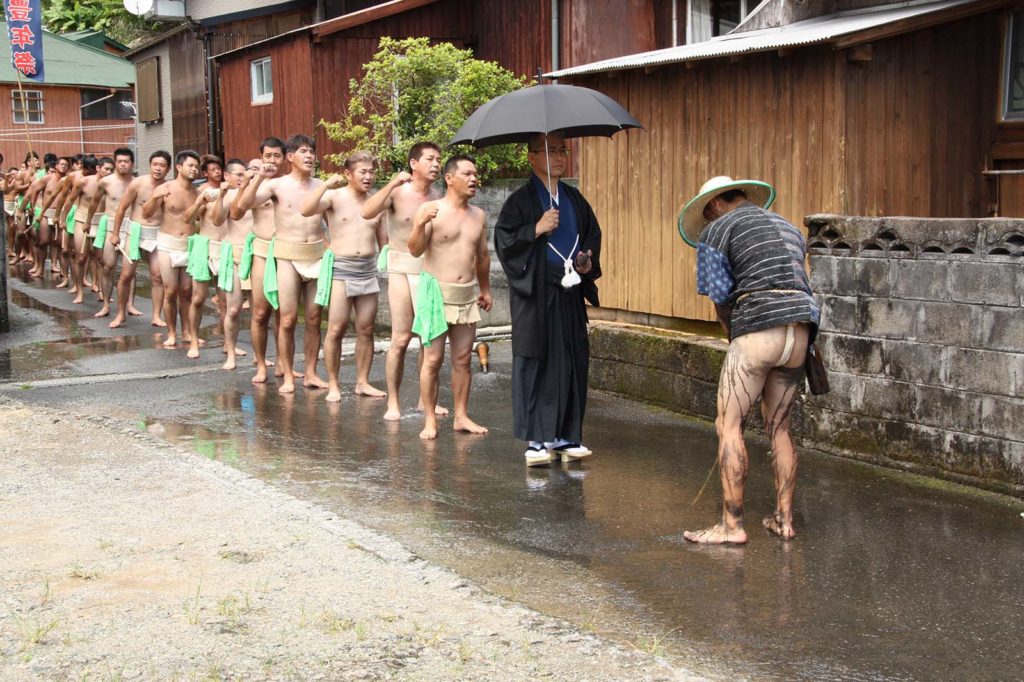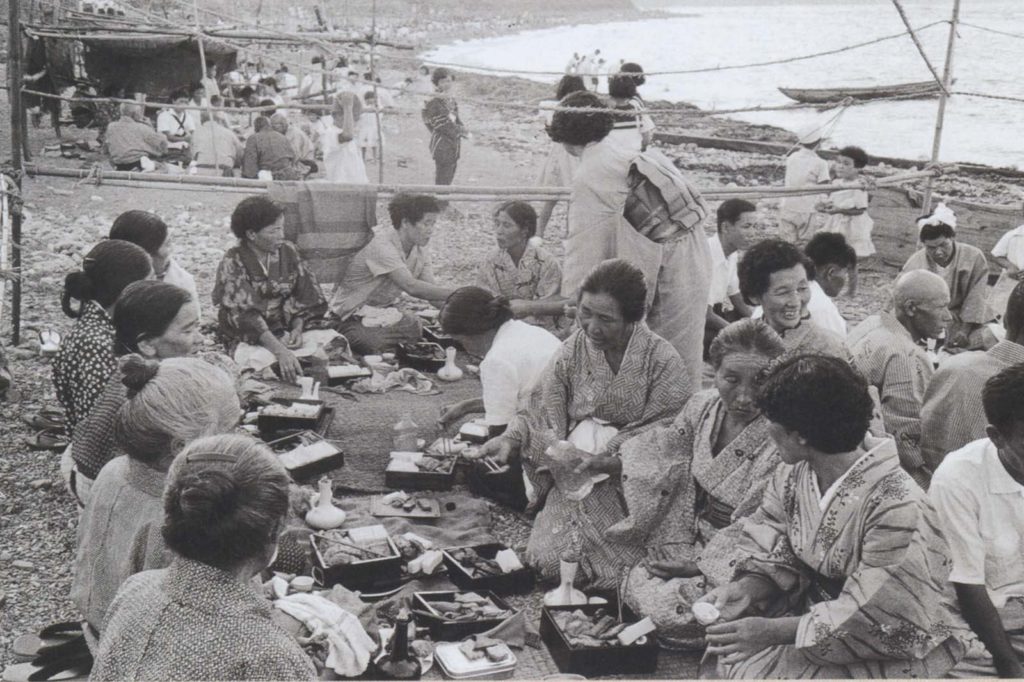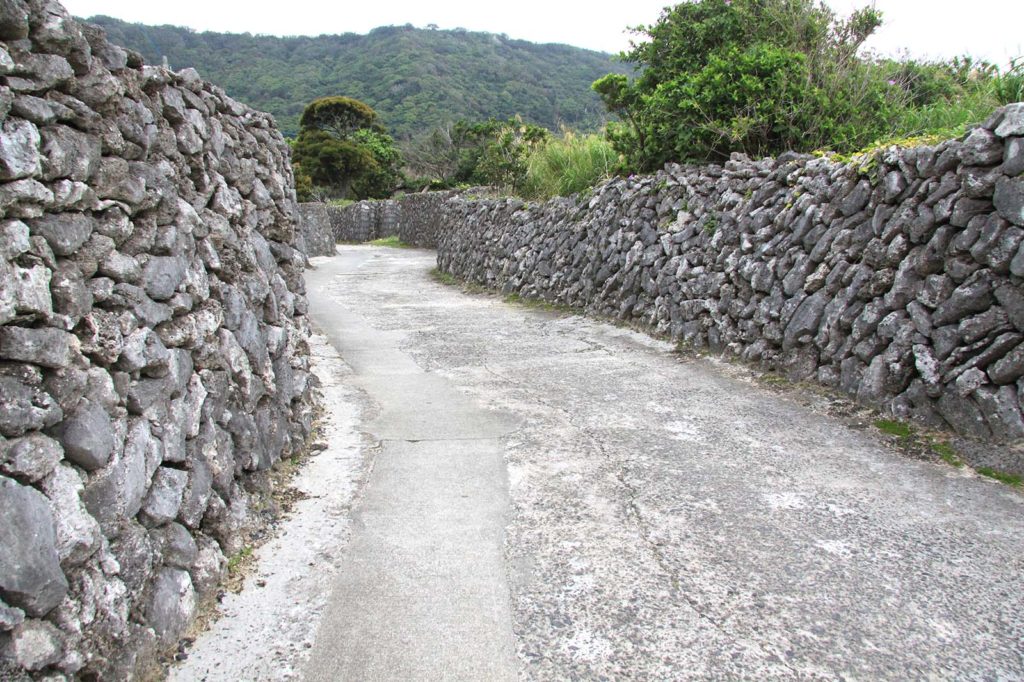
Unique Culture
Takakura in Amami Islands
Takakura is an elevated granary with a thatched roof. These granaries represent a kind of auxiliary constructions to farmhouses, with excellent features in ventilation and humidity control to keeps the contents dry and prevent pests. A typical Takakura is generally propped by 4-9 logs which support its roof, and assembled with wooden wedges instead of iron nails. Solid woods are chosen for its pillars (such as Iju [Schima wallichii or Schima liukiuensis Nakai] and Yusu [Distylium racemosum]). As these pillars are thoroughly shaved, their smooth surfaces prevent rats from encroaching on the storage section. Existing Takakura constructions have significant importance in architecture and ethnological perspectives, allowing students in these fields to learn the lives of the local people and their interactions with the nature in the premodern era.
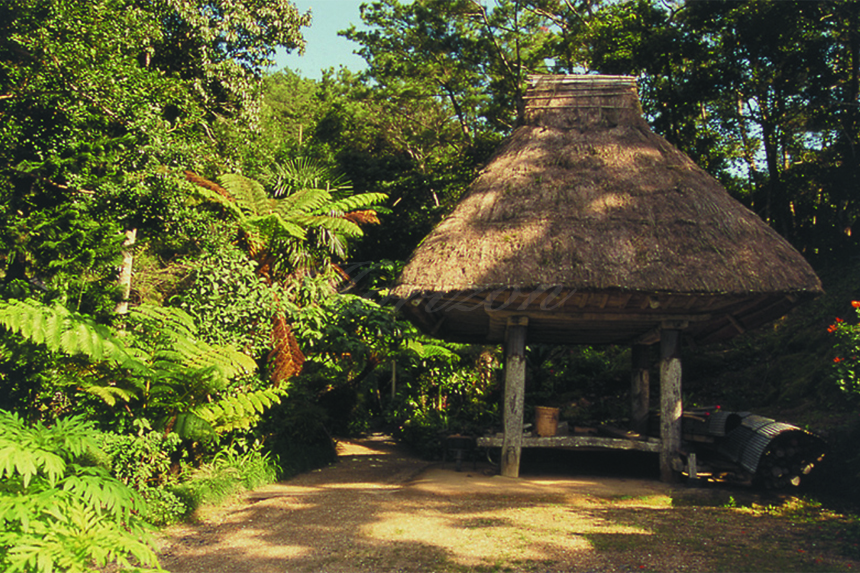
Takakura in Amami Oshima island.
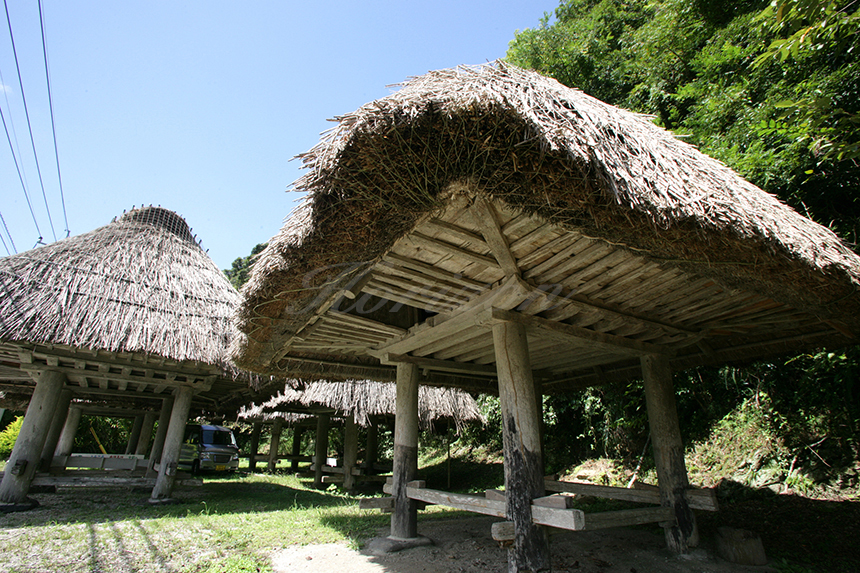
Borekura, a group of Takakura, is usually built away from the houses to avoid possible fire hazards and located near cultivating grounds for easy transportation and storage access.
Rice farming practices in Amami has drastically declined due to the rice acreage reduction policy of the national government in the post-war period. As a consequence, many of the remaining Takakura granaries, now not used for their original purposes, are preserved as tourism resources for regional revitalization.
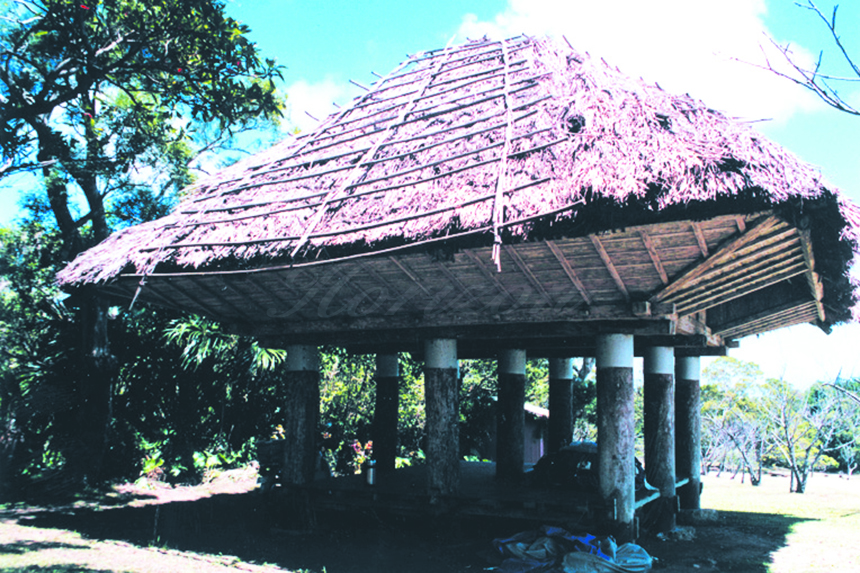
Takakura Okinoerabujima island: A nine-pillar Takakura transferred from Kakeromajima island
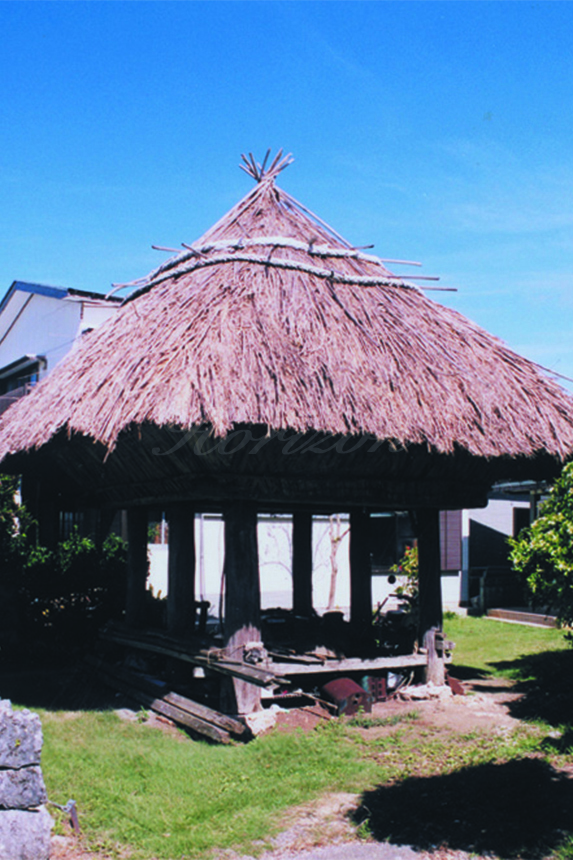
Takakura in Yoronjima island, displaying a very peculiar conical-shaped top.


